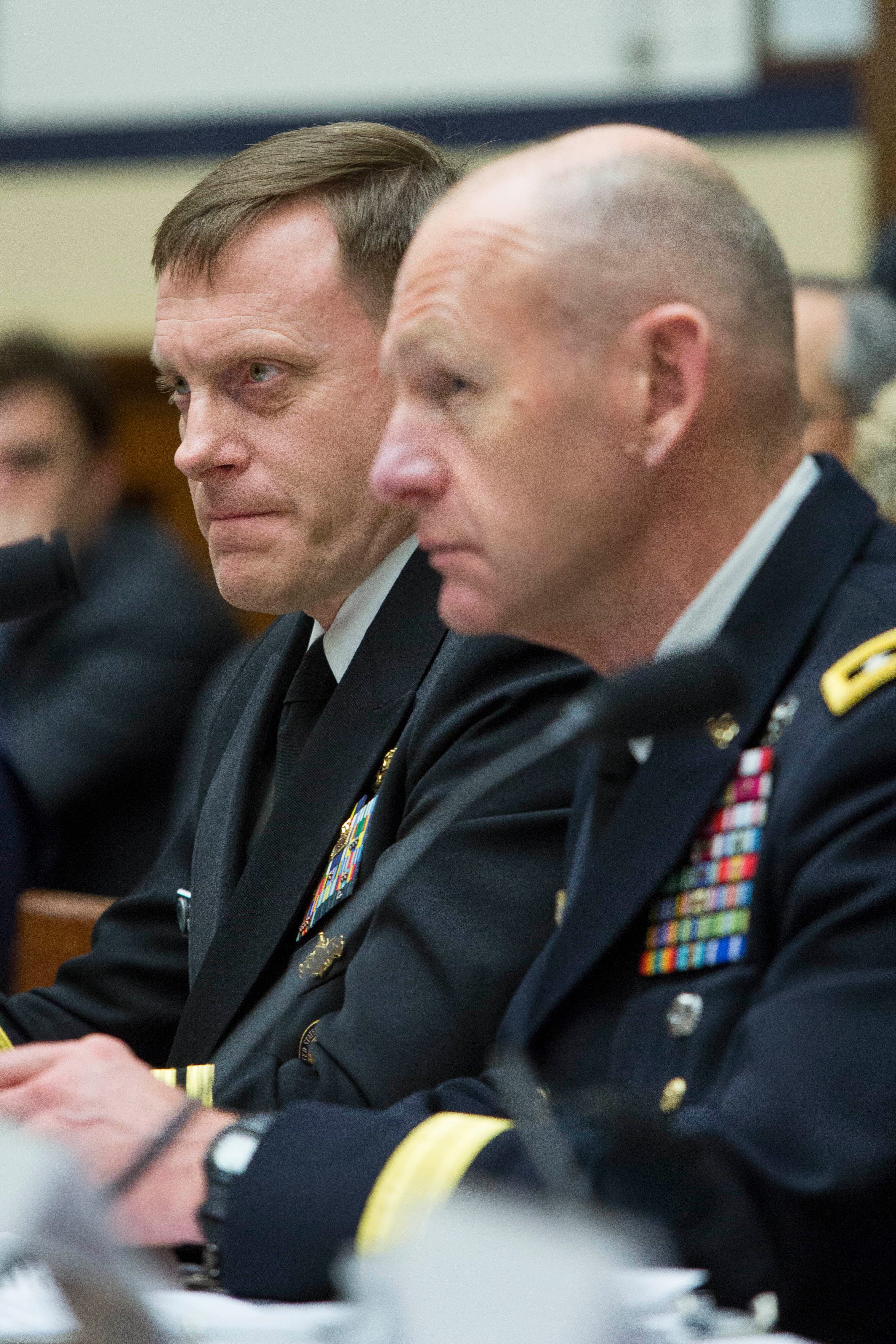The military's effort to build a 6,200-strong force of cyber warriors is well underway, but questions remain about long-term retention of the highly skilled troops who have big opportunities in the private sector.
"We are about halfway through the overall build, in terms of manning, for the cyber mission forces, and continue to make progress in training and equipping the teams," said Lt. Col. Valerie Henderson, a Pentagon spokeswoman.
U.S. Cyber Command, created just five years ago, is working toward an operational fleet of 133 teams of active-duty cyber experts by the end of next year.
Each team will take on one of three missions: defending the nation from large-scale cyber threats, protecting the Defense Department's internal networks from attack and working with combatant commanders to support offensive operations overseas.
For now, recruiting has not been a problem. For example, in the first quarter of this year, the Army met about 75 percent of its annual recruiting goal without having to fall back on bonuses or waivers as incentives. The Air Force is allowing recruits to enter the military at a higher rank if they arrive with civilian certifications in the cyber field.
"The challenge will be retention," Army Lt. Gen. Edward Cardon, the head of Army Cyber Command, told lawmakers on Capitol Hill recently.
The scope of the retention challenge remains unclear, Cardon said, because the career field has been around for only a few years and initial individual enlistments and service commitments are just now beginning to expire.

Adm. Michael Rogers (left), chief of U.S. Cyber Command and director of the National Security Agency, and Lt. Gen. Edward Cardon, chief of U.S. Army Cyber Command, testify on Capitol Hill in early March.
Photo Credit: Drew Angerer/Getty Images
For troops who are trained in cybersecurity, six-figure salaries will be easy to find in the civilian job market — and the services know that money will be one important element of retention. For example, the Marine Corps has set aside 16 percent of its total retention bonus budget for targeting its small but growing cyber force.
Yet Vice Adm. Mike Rogers, commander of U.S. Cyber Command, said the long-term solution to the retention challenge is to emphasize the service culture that the private sector cannot match.
"We are not going to compete on the basis of money. Where we're going to compete is the idea of ethos, culture ... that you're doing something that matters, that you're doing something in the service of the nation," Rogers told lawmakers.
So far, he said he is encouraged. "Retention, knock on wood, is actually higher in some ways than we had originally anticipated."
Still, creating a new cyber command from the ground up has been a challenge, he added.
"It literally probably took us two years to generate an internal consensus as to who was going to do what," he said. "We've moved beyond a discussion of who ought to do what to OK, now we have clearly identified who has what responsibilities, let's roll up our sleeves and focus on how we're going to make this work."
Andrew Tilghman is the executive editor for Military Times. He is a former Military Times Pentagon reporter and served as a Middle East correspondent for the Stars and Stripes. Before covering the military, he worked as a reporter for the Houston Chronicle in Texas, the Albany Times Union in New York and The Associated Press in Milwaukee.





